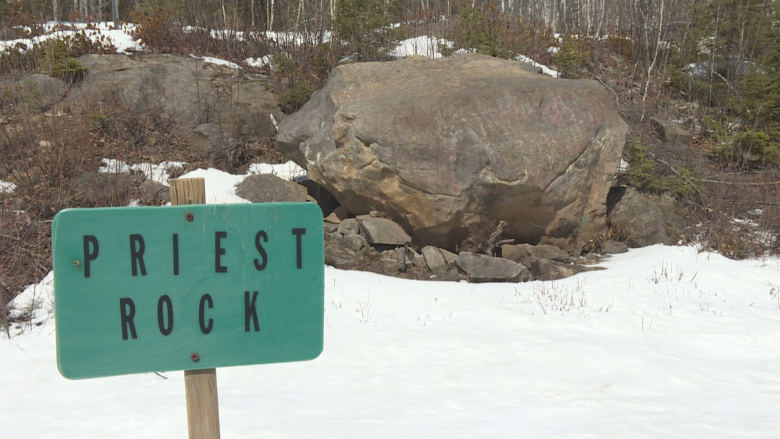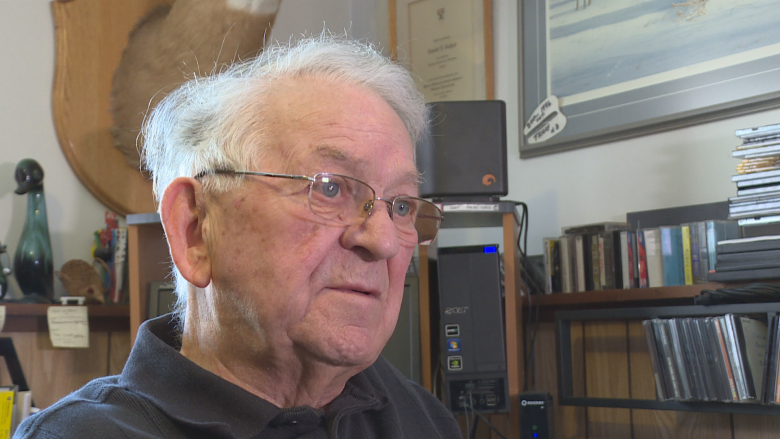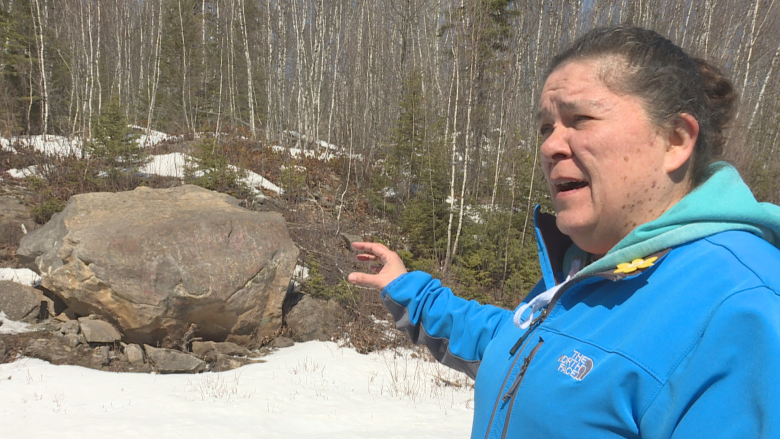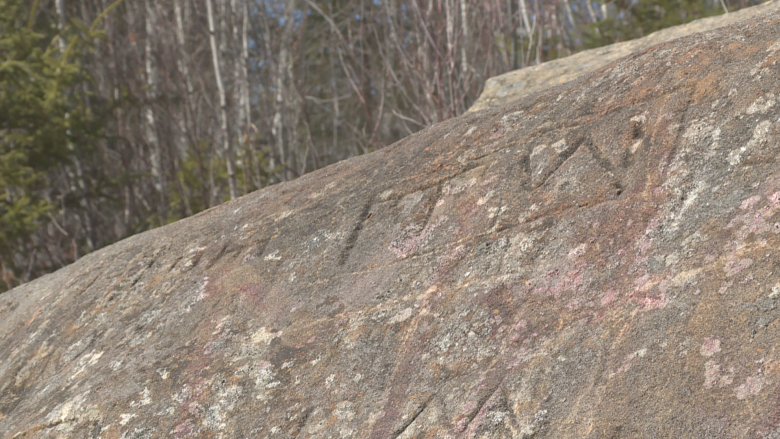'It has eroded': The lost history of Kent County's Priest Rock
Vandalism and weathering have erased a portion of historic rock carvings near Harcourt in Kent County.
But some are hoping it's not too late to restore a portion of what may be left of writings carved by a missionary over a century ago.
"It's a shame," said Antoyne Richard, the retired Kent County district engineer who helped rediscover travel logs that were carved into the boulder by a missionary in the early 1900s.
- The secret path: Bringing back a nearly forgotten ancient portage trail
Father Pacific was a French missionary priest who travelled on foot from farms and First Nations communities preaching as he went.
Using footpaths and trailways, he covered a large portion of southern New Brunswick, preaching to farms and First Nations.
Recordings on a rock
During his travels he chose a massive boulder to record some of his travel times.
"What it said I can remember," Richard said. "Five-day journey. Richibucto, Chipman. Slept here. September 15."
But in the 1930s, that footpath was expanded into a road. Dynamite was used to blast the rock out of the way. It stayed mostly intact during the blast, but was flipped, burying the carvings.
That's where they hid for decades until the road was modernized in 1983 under the supervision of Richard.
The rock was rolled once more, and the carvings rediscovered.
"I went down to take pictures of what was written on the rock," said Richard. "People around there were telling me that this priest had written a message on it."
"When I went to take a picture of it that message was plain to see," said Richard. "I photographed it. With a Polaroid camera, of all things."
Since taking them, the photo and the carving have been lost to the elements. The Polaroid to the sun. The carvings to water.
"If you look at the rock today, where is that writing? It cannot be seen because there is other writing on it now and weathering and frost and thaw, it took a layer of rock off," said Richard.
Others have also carved their names into the same rock. Spray paint is prevalent.
Carvings should be restored
"It has eroded," said Susan Levi-Peters, the former chief of nearby Elsipogtog First Nation.
"So, we're hoping that maybe some experts can come in, do something to it, to find out like what it's saying."
Levi-Peters says the carvings should be restored and recognized for their place in the province's history.
She suspects there could even be more carvings to be discovered if the stone is examined further.
For now the stone sits along Route 116. Its location and its history marked by a single small sign placed by Richard titled "Priest Rock."






